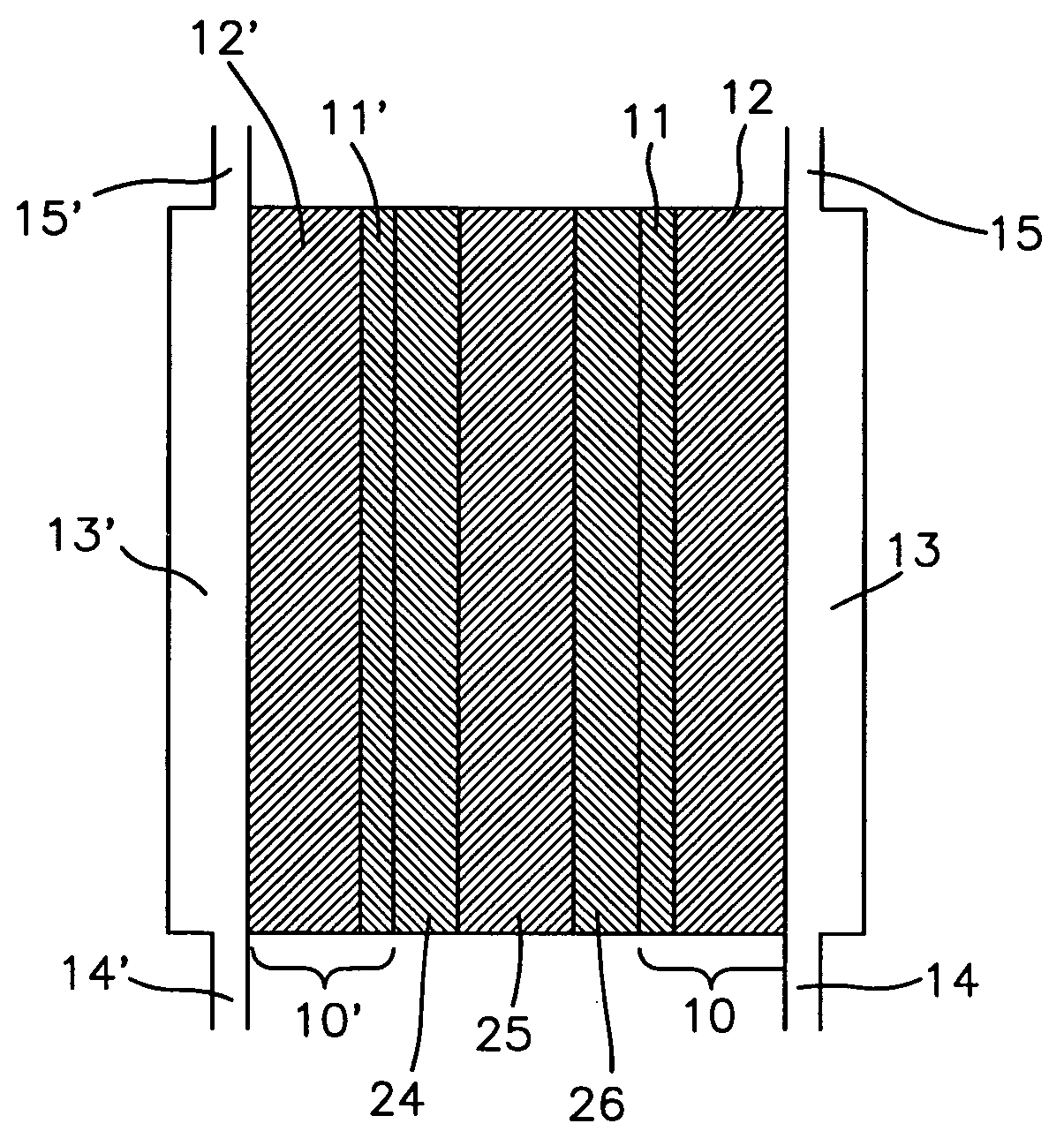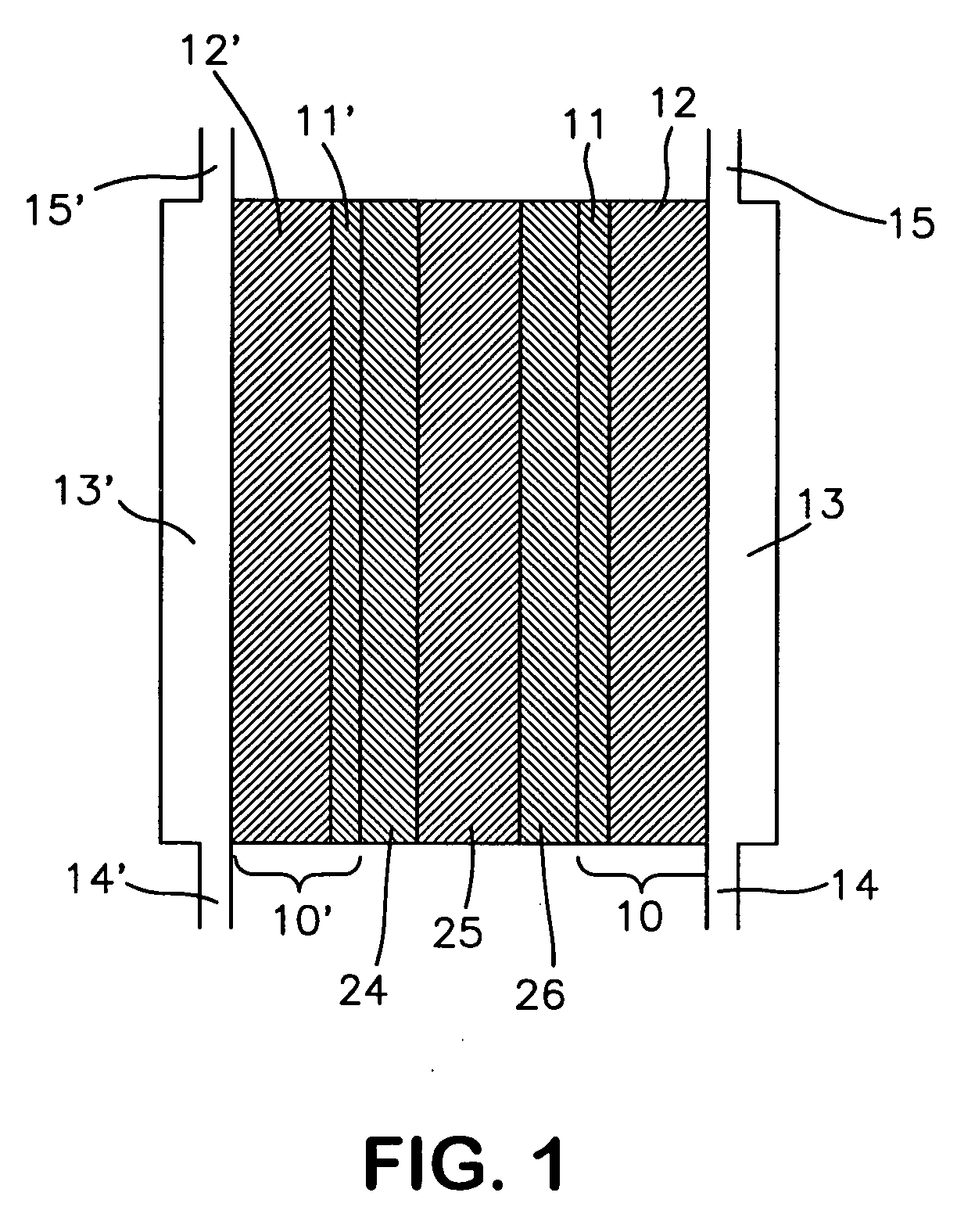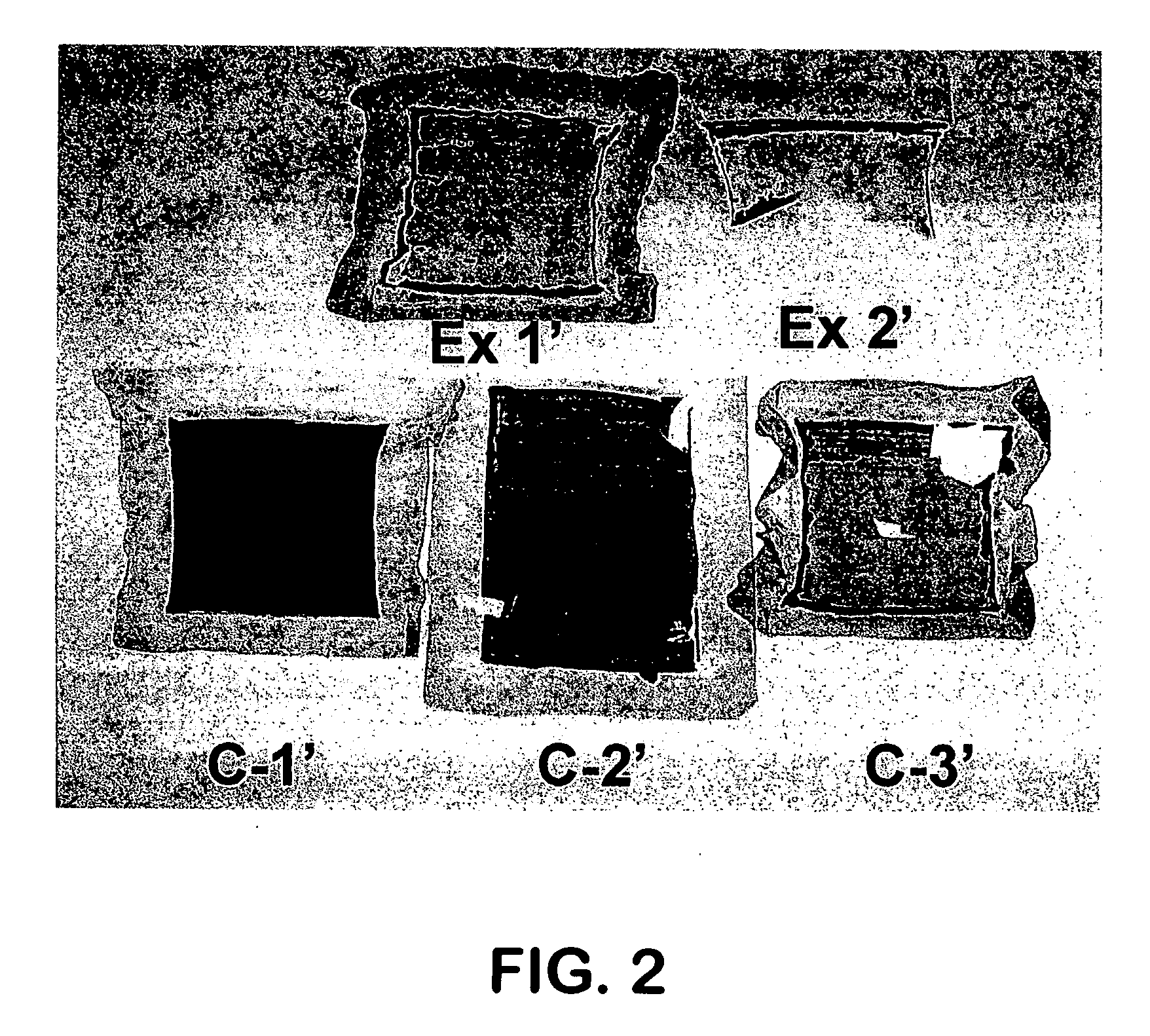Method for reducing degradation in a fuel cell
a fuel cell and degradation technology, applied in the field of reducing degradation in fuel cells or cells, can solve the problems of increasing the cost of fuel cell production, and many technical challenges, and achieve the effect of reducing catalyst dissolution
- Summary
- Abstract
- Description
- Claims
- Application Information
AI Technical Summary
Benefits of technology
Problems solved by technology
Method used
Image
Examples
examples
Description of Test Methods
Membrane Electrode Assemblies
[0046] Several types of MEAs were used to evaluate the instant invention in this application. The polymer electrolyte membrane in the MEAs used herein consisted of either a GORE-SELECT® composite membrane of an ePTFE-reinforced perfluorosulfonic acid ionomer (W. L. Gore & Associates, Inc. Newark, Del.), or a non-reinforced perfluorosulfonic acid membrane, NAFION® 112 ionomer membrane (E. I. Du Pont de Nemours Company, Wilmington, Del.). Various different thicknesses of the GORE-SELECT® composite membrane were used as described more fully in the examples below. The thickness of the NAFION® membrane was 50 micrometers.
[0047] In all cases, PRIMEA® Series 5510 electrodes (W. L. Gore & Associates, Inc., Newark, Del.) with a loading of 0.4 mg / cm2 Pt were used as both the anode and cathode. These electrodes were laminated onto the membrane using standard procedures know in the art. In particular, the membrane was placed between t...
examples 1-2
[0076] Two cells were assembled and tested to confirm the instant invention. In Example 1, a reducing agent, in this case, hydrogen, was supplied to the cell externally by adding hydrogen gas flowing at 2.5 cm3 / min hydrogen at standard conditions to the air being supplied to the cathode as the oxidant. The hydrogen was added at this flow rate through the entire test protocol. In Example 2, the reducing agent, in this case hydrogen, was supplied internally by manipulating the membrane through the use of a very thin GORE-SELECT® membrane to increase hydrogen cross-over. The cell operating conditions were identical to those used in Comparative Example C-3. The results (Table 2) indicate that in Example 1 the extent of Pt dissolution was far less than in Comparative Example C-3, which used the same operating conditions. The reduction or absence of Pt in the membrane was confirmed by visual observation (FIG. 2), x-ray fluorescence measurement (Table 2) and SEM observation. In the case of...
PUM
 Login to View More
Login to View More Abstract
Description
Claims
Application Information
 Login to View More
Login to View More - R&D
- Intellectual Property
- Life Sciences
- Materials
- Tech Scout
- Unparalleled Data Quality
- Higher Quality Content
- 60% Fewer Hallucinations
Browse by: Latest US Patents, China's latest patents, Technical Efficacy Thesaurus, Application Domain, Technology Topic, Popular Technical Reports.
© 2025 PatSnap. All rights reserved.Legal|Privacy policy|Modern Slavery Act Transparency Statement|Sitemap|About US| Contact US: help@patsnap.com



